Abstract
1. The effect of hypoxia on pulmonary arterial pressure was studied in young and adult rabbits.
2. In isolated perfused lungs, hypoxia caused no rise in pulmonary arterial pressure in rabbits on the day of birth. The size of the hypoxic response increased progressively until 9-11 days of age, when the adult response of a 20% rise of pulmonary arterial pressure at constant flow was attained.
3. The intact adult rabbit responded to hypoxia with a 14-30% rise in pulmonary arterial pressure, attributed to vasoconstriction and independent of frequency or tidal volume during positive pressure ventilation.
Full text
PDF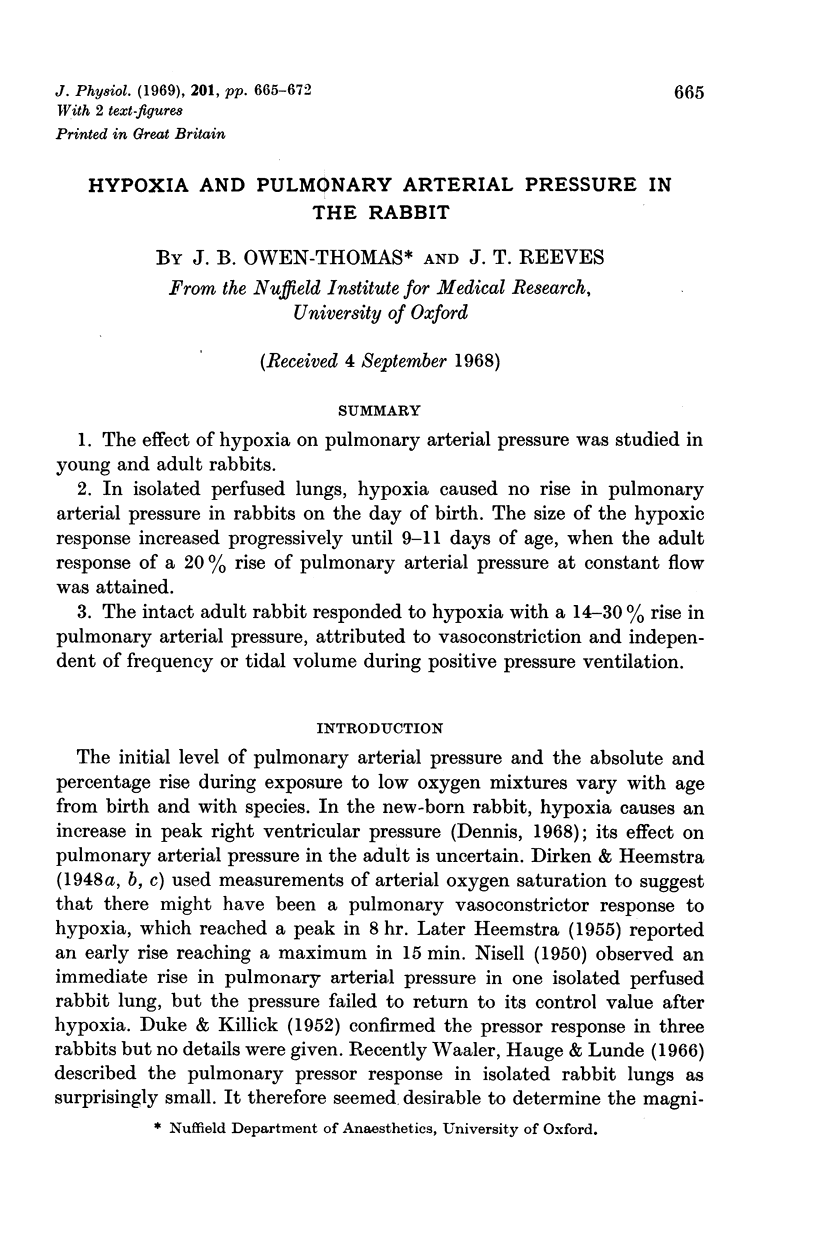
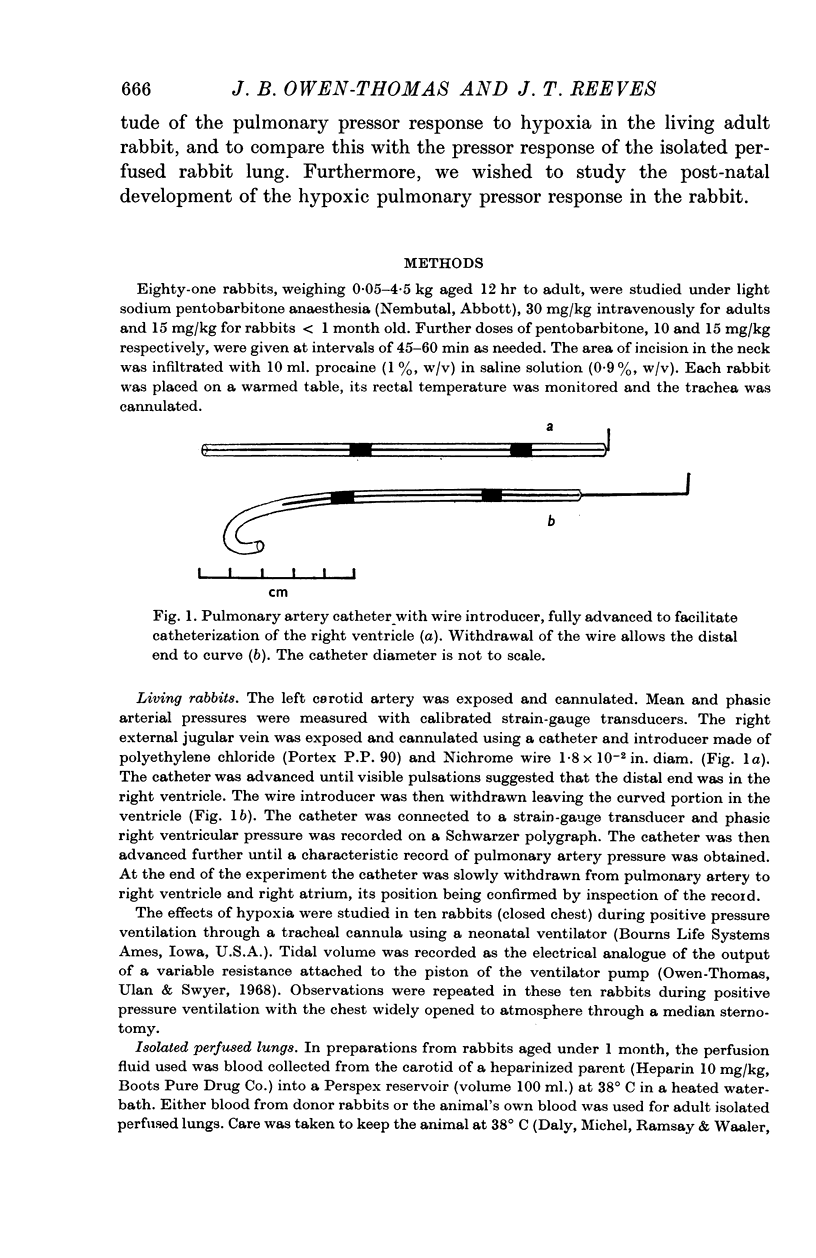
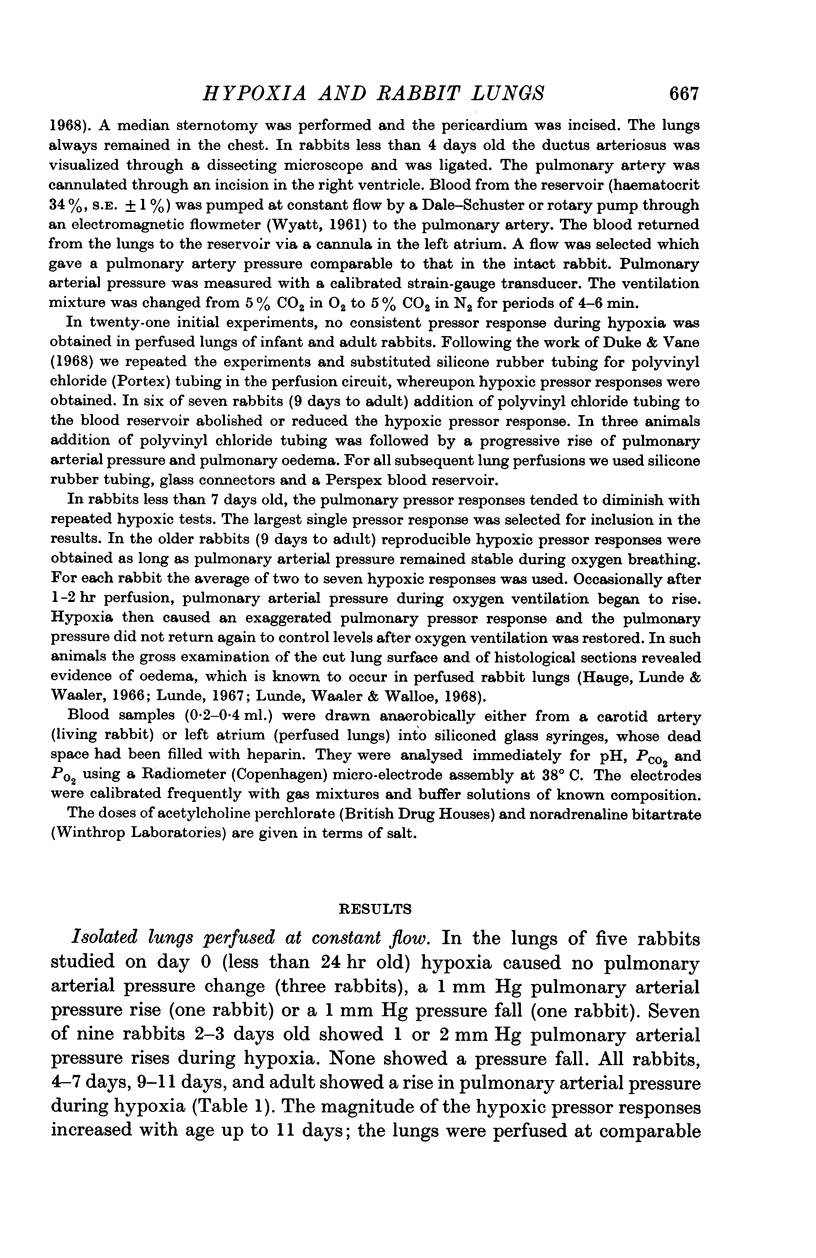
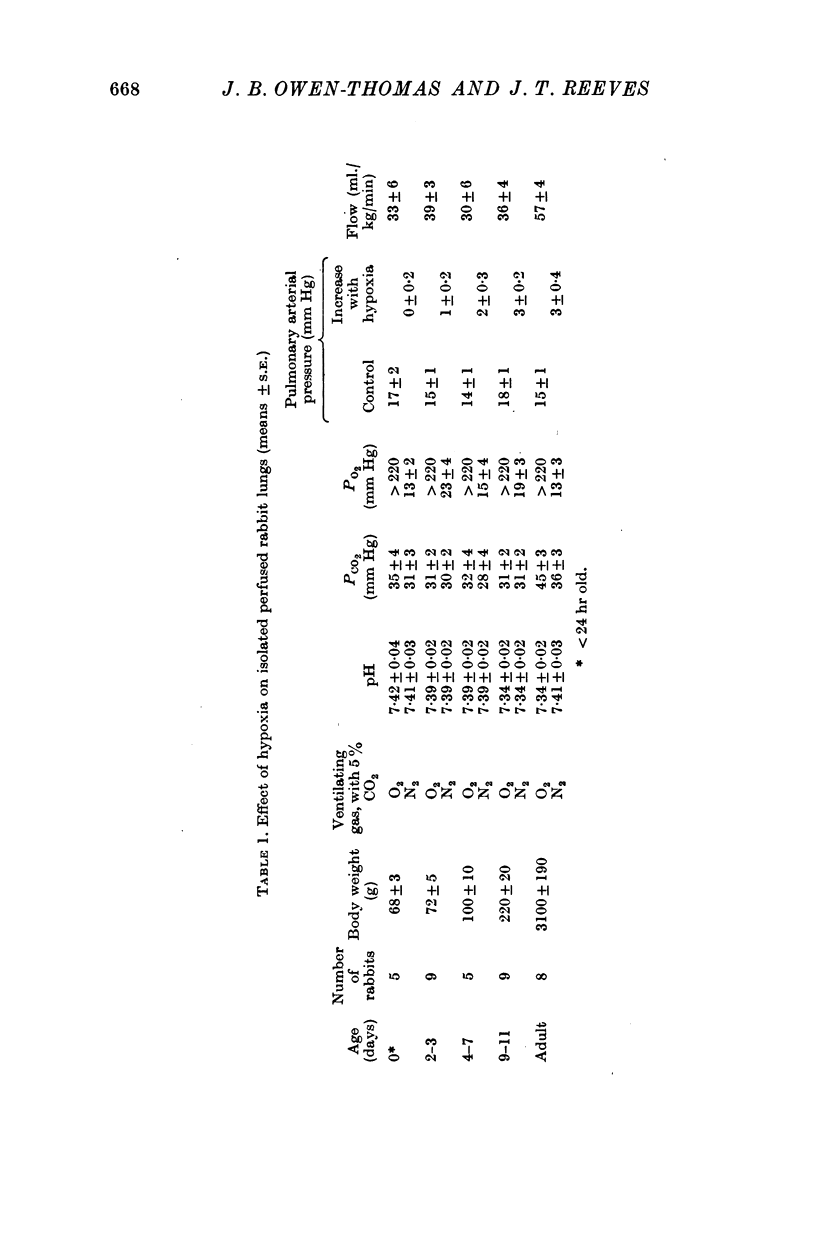
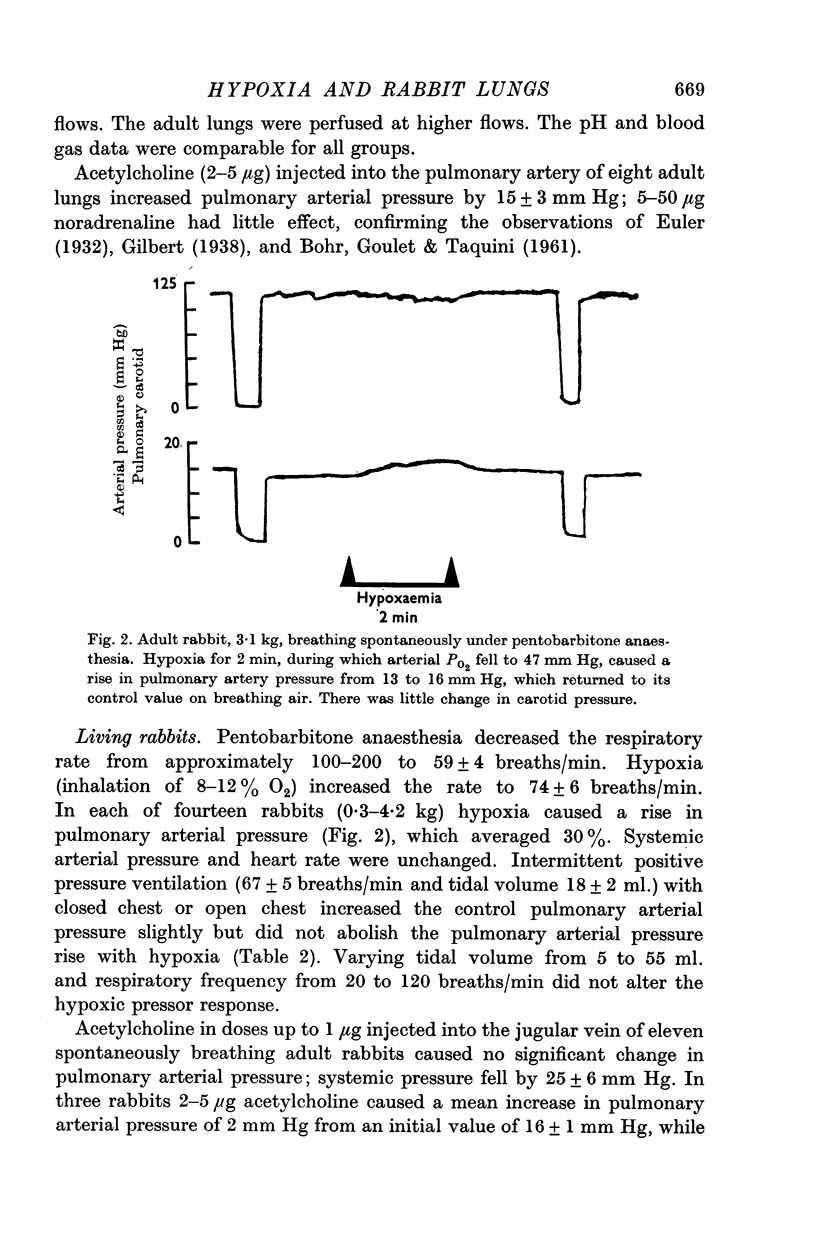
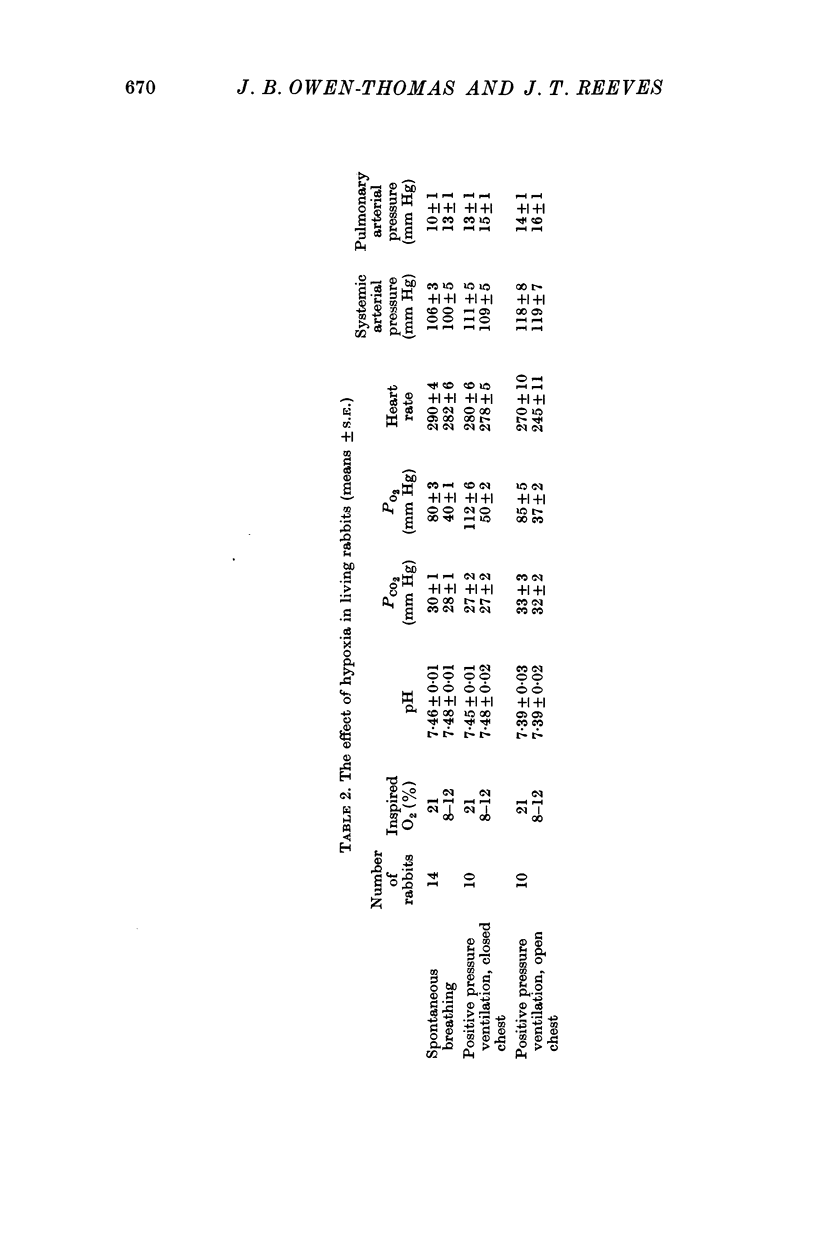
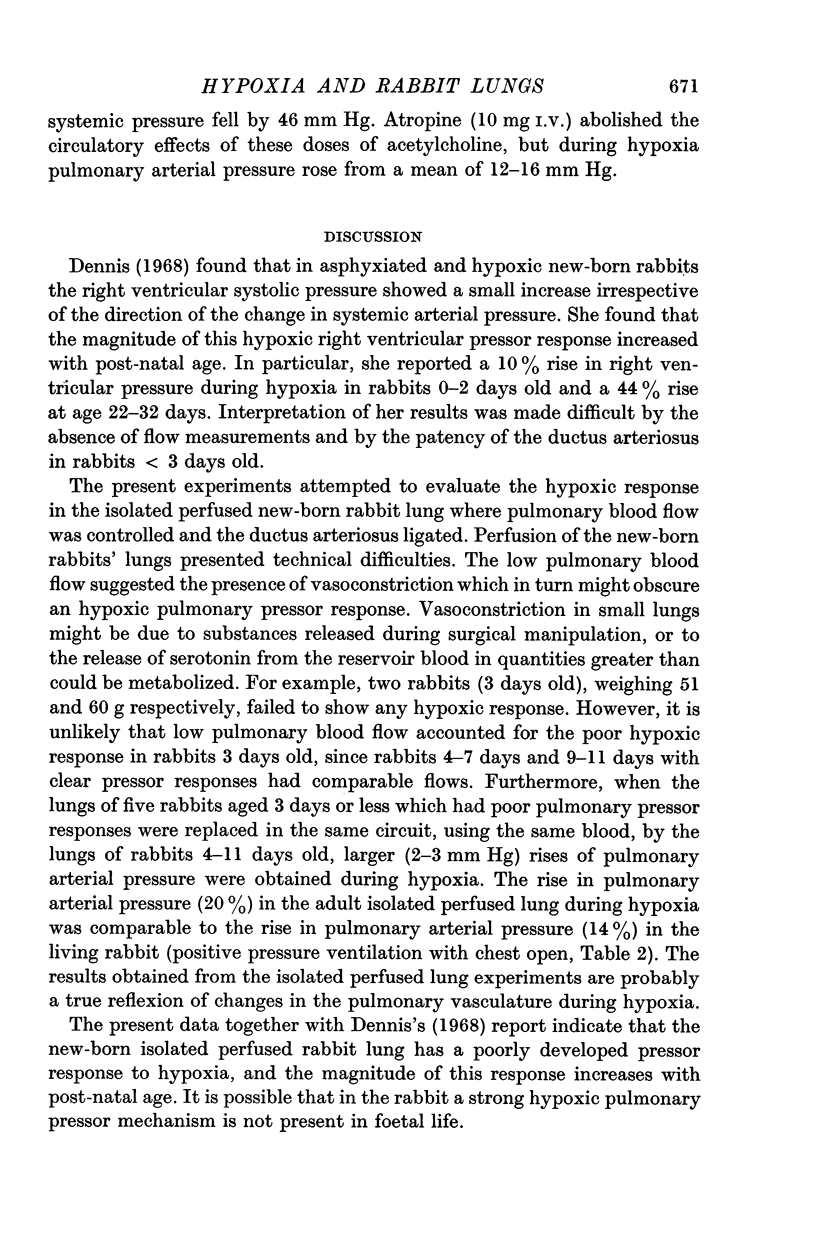

Selected References
These references are in PubMed. This may not be the complete list of references from this article.
- BOHR D. F., GOULET P. L., TAQUINI A. C., Jr Direct tension recording from smooth muscle of resistance vessels from various organs. Angiology. 1961 Oct;12:478–485. doi: 10.1177/000331976101201009. [DOI] [PubMed] [Google Scholar]
- DUKE H. N., KILLICK E. M. Pulmonary vasomotor responses of isolated perfused cat lungs to anoxia. J Physiol. 1952 Jul;117(3):303–316. doi: 10.1113/jphysiol.1952.sp004750. [DOI] [PMC free article] [PubMed] [Google Scholar]
- Daly I. D., Michel C. C., Ramsay D. J., Waaler B. A. Conditions governing the pulmonary vascular response to ventilation hypoxia and hypoxaemia in the dog. J Physiol. 1968 May;196(2):351–379. doi: 10.1113/jphysiol.1968.sp008512. [DOI] [PMC free article] [PubMed] [Google Scholar]
- Dennis J. Pressure measurements in the lesser circulation of the newborn rabbit. Q J Exp Physiol Cogn Med Sci. 1968 Apr;53(2):136–154. doi: 10.1113/expphysiol.1968.sp001953. [DOI] [PubMed] [Google Scholar]
- Duke H. N., Vane J. R. An adverse effect of polyvinylchloride tubing used in extracorporeal circulation. Lancet. 1968 Jul 6;2(7558):21–23. doi: 10.1016/s0140-6736(68)92891-2. [DOI] [PubMed] [Google Scholar]
- Hauge A., Lunde P. K., Waaler B. A. Vasoconstriction in isolated blood-perfused rabbit lungs and its inhibition by cresols. Acta Physiol Scand. 1966 Jan-Feb;66(1):226–240. doi: 10.1111/j.1748-1716.1966.tb03189.x. [DOI] [PubMed] [Google Scholar]
- Lunde P. K., Waaler B. A., Walloe L. The inhibitory effect of various phenols upon ATP-induced vasoconstriction in isolated perfused rabbit lungs. Acta Physiol Scand. 1968 Mar;72(3):331–337. doi: 10.1111/j.1748-1716.1968.tb03855.x. [DOI] [PubMed] [Google Scholar]
- Owen-Thomas J. B., Ulan O. A., Swyer P. R. The effect of varying inspiratory gas flow rate on arterial oxygenation during IPPV in the respiratory distress syndrome. Br J Anaesth. 1968 Jul;40(7):493–502. doi: 10.1093/bja/40.7.493. [DOI] [PubMed] [Google Scholar]
- V Euler U. S. A vaso-constrictor action of acetylcholine on the rabbit's pulmonary circulation. J Physiol. 1932 Mar 7;74(3):271–278. doi: 10.1113/jphysiol.1932.sp002846. [DOI] [PMC free article] [PubMed] [Google Scholar]


